10 Most Unlikely Heel Turns In Wrestling History
We just didn't see them coming...

Aug 31, 2018
More than a week has passed since Becky Lynch's violent freakout on Charlotte at the 2018 SummerSlam, and the buzz from Becky's fanbase for the incident is still going strong. Frankly, people are trying to figure out why the highly-popular Becky's supposed to be the heel in all of this, since Charlotte slithered her way into a match that wasn't hers to start with. And, to be fair, Charlotte doesn't seem to have anywhere near Becky's fanbase.
It wouldn't be the first heel turn that fans have groaned at. Over the years, babyfaces have crossed over to the realm of bad for peculiar reasons. Sometimes, a turn is executed as a swerve, solely for the shock value of seeing a hero abandon their principles. Other times, conspiracy theories abound, as fans believe that some wrestlers get turned as a means of keeping them from scooping heat from the chosen top babyface. Whatever the case may be, some turns just didn't take, nor did they make sense from a creative standpoint.
In light of Becky Lynch's recent character limbo, and the impassioned response to the angle, let's take a look at some heel turns from years past that fell a little flatter than those in power would've hoped for.
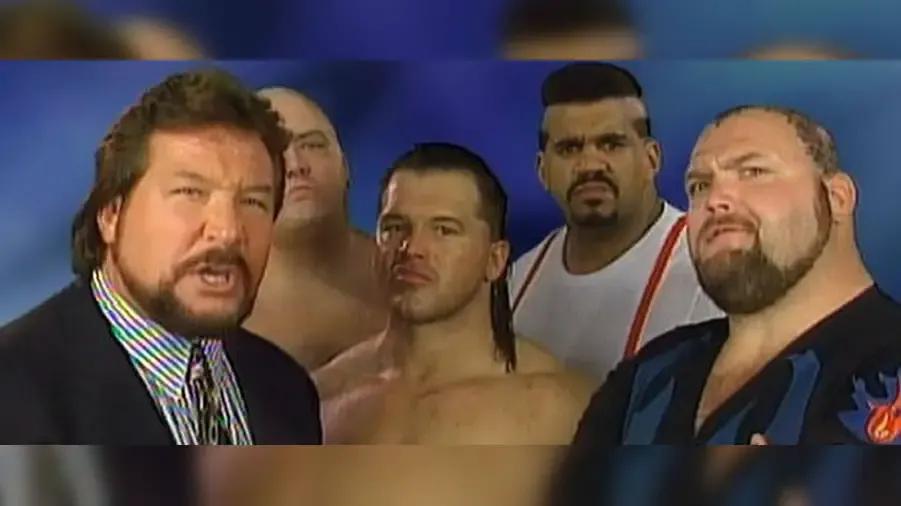
Characters like Wahoo McDaniel, Chief Jay Strongbow, and the ilk have generally been portrayed as proud and noble fighters, and Tatanka (a legitimate member of the Lumbee tribe) followed down that same beaten path. In his time as an upper midcard babyface on WWE programming, Tatanka was all about honour, pride, and the demonstration of unbreakable fighting spirit. Once he was established in his role, it was hard to imagine him playing anything else.
But in 1994, through a swerve that most would see coming, Tatanka double-crossed Lex Luger and joined Ted DiBiase's Million Dollar Corporation. For one week, Tatanka showed up wearing a fancy suit, but after that, he just wore his usual ring gear, with black trunks replacing his turquoise ones. Once the shock of, "Wait, *Tatanka* is a bad guy now?" wore off (which was in about two or three weeks), the potency of the crossover was gone as well.
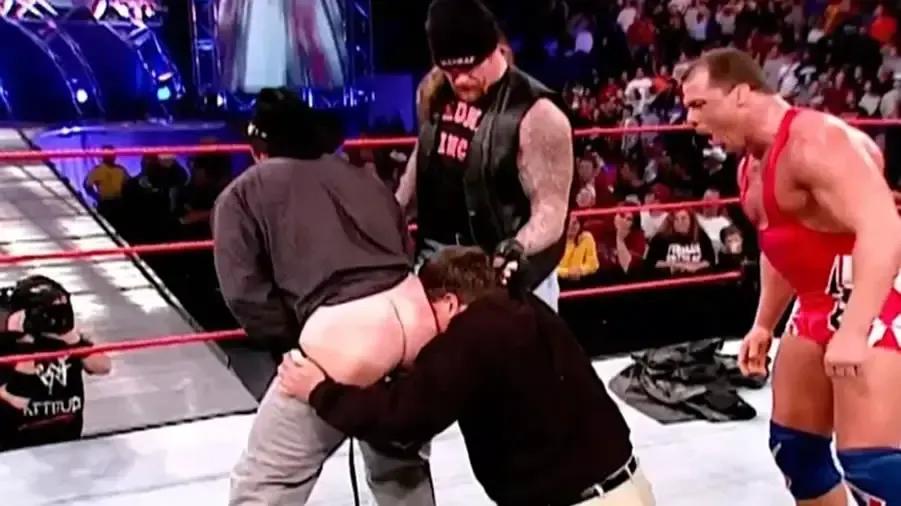
File this one under "truly random". After Survivor Series 2001, Vince McMahon had started up the infamous Kiss My Ass Club as a way to get back at those who were treacherous to WWE in the great war with WCW/ECW. When Stone Cold bulked at joining, McMahon and Kurt Angle tried to force an uncharacteristically-amused Jim Ross to join the club instead. That's when Undertaker, WWE's conscience, intervened.
Then, without any hint or set-up, Undertaker struck JR for apparently feeling like he was "too good" for membership, then forced him into Vince's backside in an awkward moment. For eight months after that, Undertaker played a heel that mostly earned cheers for his general badassery and dominance, as he was simply too cool to be a villain. The manner in which he turned heel was long since forgotten about, making it one of the stranger catalysts ever.
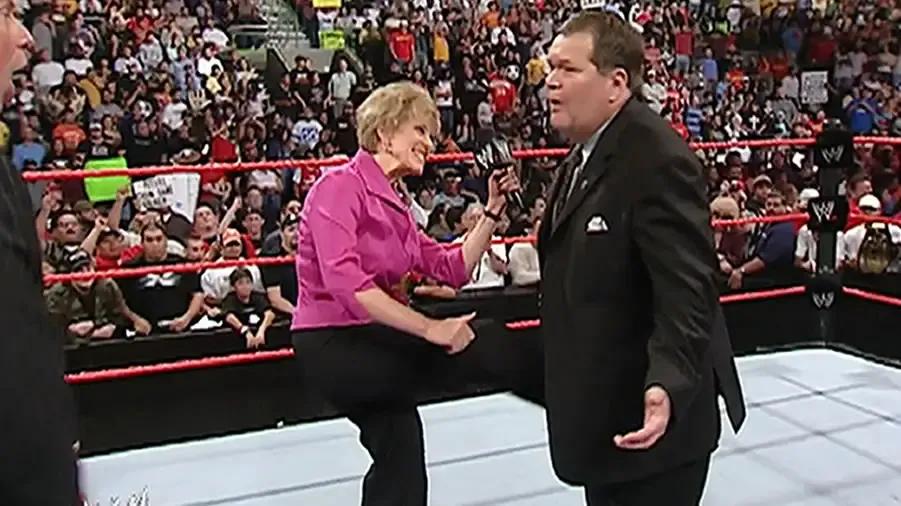
Hey, more fun with embarrassing Jim Ross, and more convoluted ways to involve him in angles. When Steve Austin assaulted the entire McMahon family on Raw's Homecoming show (Linda included), Vince dedicated the show-ending skit a week later to forcing the three-man Raw announce team to apologize for not intervening. Why them and not anybody else is beyond me or you, but nonetheless, Coachman and Lawler expressed remorse, but Ross, for some reason, didn't. For some reason.
Vince and Stephanie were irate, but Linda arrived to defend the longtime announcer. Then she personally, for some reason, fired Ross and, for some reason, kicked him in the balls. For some reason. This would be barely explored, save for WrestleMania 22, when the four evil McMahons got together for a prayer session. JR needed to be written off TV at the time to have major surgery, but man, what a weird way to give him an out.

When the former Headshrinker Fatu found his niche in 1999, it was in an unfathomable way: as a dancing sumo wrestler, whose bared, bulbous backside would be put to good use via sitting on the faces of detestable heels. The role gave Rikishi life in the upper-midcard, the sort of friend of the top guys that could act as a likeable tag partner and ally. And hey, it was always fun to watch somebody you didn't like take that Stinkface, right?
WWE decided to take this amiable, fun-loving character and flip the script, revealing that he was the one who attempted to kill Steve Austin in a vehicular assault one year earlier. It was a weird choice having the heavyset comic relief suddenly be painted over as a ruthless hoodlum, especially since he still wore his bottom-baring tights in matches. It was a leap even Evel Knievel wouldn't have attempted.

Though she may not have been the most technically-gifted of women's wrestlers, there was no denying Sable's popularity and appeal. From a physical standpoint, she embodied what an Attitude Era crowd wanted out of a heroine, and she was portrayed as a scrappy ass-kicker to boot. Her rise to celebrity status was no surprise, as she was far and away the most popular woman on weekly WWE TV.
That's why her heel turn was a bit perplexing to fans, as on-camera, she went from being strong and determined to catty and egotistical. Her turn coincided with her covering a monthly edition of Playboy, so the timing was unusual as well. The other problem is that no other female on the roster, save for maybe Chyna (who rarely wrestled women), was on Sable's level of popularity. The likes of Tori and Luna weren't exactly inspiring hefty crowd responses when matched up with the still-popular Sable.
[embed
[/embed]
For some reason, there were those in WWE who felt that fans could possibly turn against good ol' JR. Even years after Ross was removed from WWE's commentary desk, fans clamoured for his return, especially as Michael Cole's robotic disengagement and hucksterism would prove to be an inadequate replacement. That's funny, because when Ross was steered toward a heel turn in 1999, Cole was one of those he focused his annoyance on.
Ross had suffered a second bout of Bell's palsy in late 1998, so Cole replaced him on WWE broadcasts while Ross recovered. In the weeks before WrestleMania XV, a still-ailing Ross returned, but not as a beloved, trusted uncle-figure. Instead, Ross cut bitter tirades about WWE holding his altered appearance against him, and lamenting that Cole had replaced him. In one such outburst, Ross kicked Cole in the crotch, earning adulation from any fan with ears. The following month, Ross made a full-time comeback, and his heel turn would be wiped from the books.

From the time Punk delivered the Pipe Bomb sermon, he became the avatar of the disenchanted fan, the one that had grown weary of Cena and PG wrestling and a generally-benign product that was nothing like the wild shows they'd grown up with. Punk was positioned as a firebrand, an aggressive dissident that was going to write all the wrongs. He was turned face on the weight of his popularity surge, and given a lengthy WWE Championship reign that some would argue wasn't marketed heavily enough.
When Punk suddenly proved cowardly and underhanded when he attacked The Rock in July 2012, it didn't sit well with many. Punk, along with Paul Heyman who he'd soon align with, did everything they could to be irksome and hateable, but a good segment of the audience still saw him as the antidote to the WWE formula. The heel turn was just a stiff reminder that WWE didn't see Punk as the top guy whatsoever.
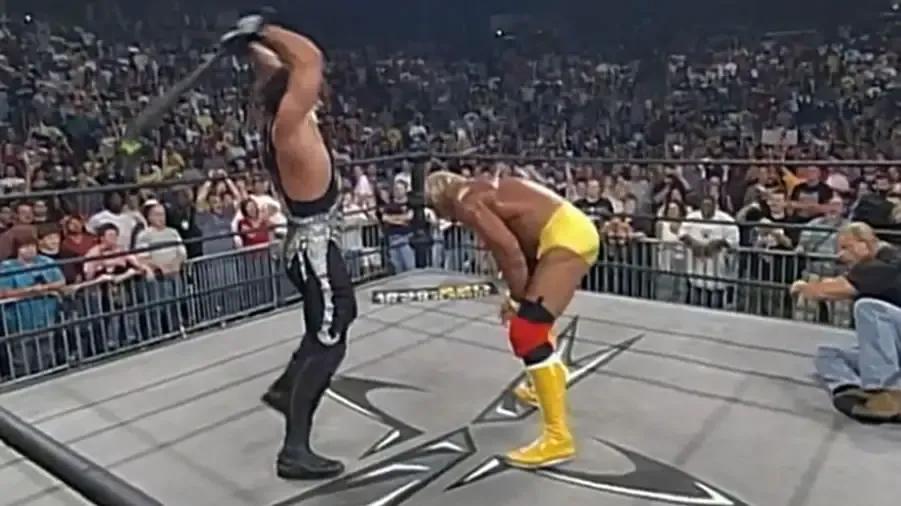
When you're in a tailspin, you tend to do desperate things, and a tailspin was what WCW found themselves in headed into the fall of 1999. Raw was kicking Nitro's ass in the ratings, attendance was dropping, buyrates were falling, and there seemed to be no end in sight. To try and shake things up a tad, WCW took their franchise player, their loyal star of more than a decade, and turned him heel.
With an assist from Lex Luger, Sting used a baseball bat to defeat WCW Champion Hulk Hogan for the belt at Fall Brawl. To say that the heel turn didn't stick would be an understatement, as fans resented the idea that they would be forced to choose Hogan over the forever-heroic Stinger. It didn't matter anyway, since inbound creative head Vince Russo would have Sting repositioned as a babyface shortly after Halloween Havoc.
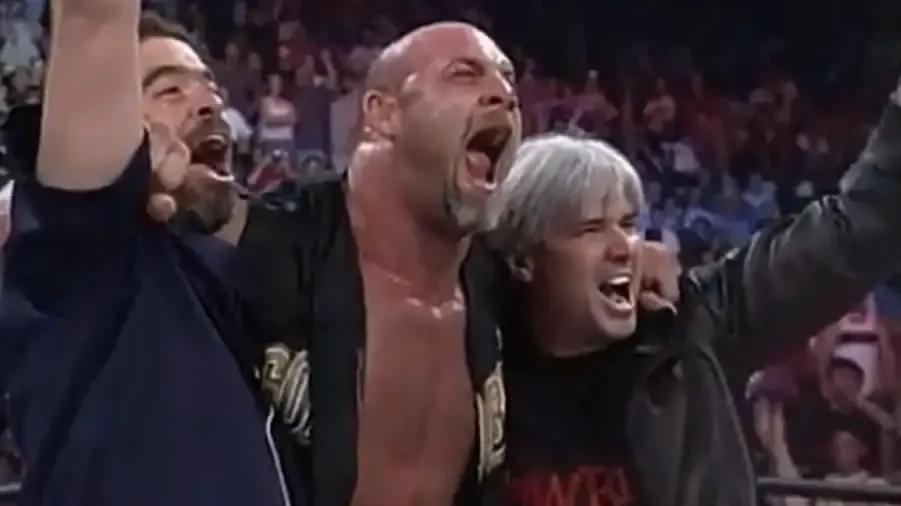
It's still inconceivable 20 years later that WCW managed to cut off their greatest homegrown superstar off at the knees. Ending his streak at Starrcade was waaaaaaay too premature, as fans were still buying into The Man as an unbreakable wrecking machine that was worth believing in. He was the perfect answer to WWE's Steve Austin, and WCW needed all the help they could get.
By 2000, the magic was fading, as Goldberg hadn't been treated like a supreme being in more than a year and a half, and it was only about to get worse. WCW had hyped a major development for the Great American Bash pay-per-view, something that Vince McMahon could apparently do nothing about (their words, not mine). That development was beloved superhero Goldberg turning heel and joining The New Blood faction. You may be surprised to learn that this didn't turn the ratings around.
It's a testament to the unparalleled greatness of WrestleMania X-Seven that most would agree that the shocking ending doesn't detract from the show any. And there seemed to be a chance that the startling turn of Stone Cold Steve Austin could have legs - Austin demonstrated an innate ability to play an insecure, paranoid, desperate villain who feared his mojo was leaving him, and was willing to do anything to stay on top. As far as execution went, Austin made a great heel with those characteristics.
Problem was, the majority of fans didn't want to see Austin in that role. This change, along with the end of the wrestling boom, led to an alarming decline in numbers throughout 2001, as fans just didn't want to root against Austin, no matter how much of a chickens**t he turned into.
More than a week has passed since Becky Lynch's violent freakout on Charlotte at the 2018 SummerSlam, and the buzz from Becky's fanbase for the incident is still going strong. Frankly, people are trying to figure out why the highly-popular Becky's supposed to be the heel in all of this, since Charlotte slithered her way into a match that wasn't hers to start with. And, to be fair, Charlotte doesn't seem to have anywhere near Becky's fanbase.
It wouldn't be the first heel turn that fans have groaned at. Over the years, babyfaces have crossed over to the realm of bad for peculiar reasons. Sometimes, a turn is executed as a swerve, solely for the shock value of seeing a hero abandon their principles. Other times, conspiracy theories abound, as fans believe that some wrestlers get turned as a means of keeping them from scooping heat from the chosen top babyface. Whatever the case may be, some turns just didn't take, nor did they make sense from a creative standpoint.
In light of Becky Lynch's recent character limbo, and the impassioned response to the angle, let's take a look at some heel turns from years past that fell a little flatter than those in power would've hoped for.

Characters like Wahoo McDaniel, Chief Jay Strongbow, and the ilk have generally been portrayed as proud and noble fighters, and Tatanka (a legitimate member of the Lumbee tribe) followed down that same beaten path. In his time as an upper midcard babyface on WWE programming, Tatanka was all about honour, pride, and the demonstration of unbreakable fighting spirit. Once he was established in his role, it was hard to imagine him playing anything else.
But in 1994, through a swerve that most would see coming, Tatanka double-crossed Lex Luger and joined Ted DiBiase's Million Dollar Corporation. For one week, Tatanka showed up wearing a fancy suit, but after that, he just wore his usual ring gear, with black trunks replacing his turquoise ones. Once the shock of, "Wait, *Tatanka* is a bad guy now?" wore off (which was in about two or three weeks), the potency of the crossover was gone as well.

File this one under "truly random". After Survivor Series 2001, Vince McMahon had started up the infamous Kiss My Ass Club as a way to get back at those who were treacherous to WWE in the great war with WCW/ECW. When Stone Cold bulked at joining, McMahon and Kurt Angle tried to force an uncharacteristically-amused Jim Ross to join the club instead. That's when Undertaker, WWE's conscience, intervened.
Then, without any hint or set-up, Undertaker struck JR for apparently feeling like he was "too good" for membership, then forced him into Vince's backside in an awkward moment. For eight months after that, Undertaker played a heel that mostly earned cheers for his general badassery and dominance, as he was simply too cool to be a villain. The manner in which he turned heel was long since forgotten about, making it one of the stranger catalysts ever.

Hey, more fun with embarrassing Jim Ross, and more convoluted ways to involve him in angles. When Steve Austin assaulted the entire McMahon family on Raw's Homecoming show (Linda included), Vince dedicated the show-ending skit a week later to forcing the three-man Raw announce team to apologize for not intervening. Why them and not anybody else is beyond me or you, but nonetheless, Coachman and Lawler expressed remorse, but Ross, for some reason, didn't. For some reason.
Vince and Stephanie were irate, but Linda arrived to defend the longtime announcer. Then she personally, for some reason, fired Ross and, for some reason, kicked him in the balls. For some reason. This would be barely explored, save for WrestleMania 22, when the four evil McMahons got together for a prayer session. JR needed to be written off TV at the time to have major surgery, but man, what a weird way to give him an out.

When the former Headshrinker Fatu found his niche in 1999, it was in an unfathomable way: as a dancing sumo wrestler, whose bared, bulbous backside would be put to good use via sitting on the faces of detestable heels. The role gave Rikishi life in the upper-midcard, the sort of friend of the top guys that could act as a likeable tag partner and ally. And hey, it was always fun to watch somebody you didn't like take that Stinkface, right?
WWE decided to take this amiable, fun-loving character and flip the script, revealing that he was the one who attempted to kill Steve Austin in a vehicular assault one year earlier. It was a weird choice having the heavyset comic relief suddenly be painted over as a ruthless hoodlum, especially since he still wore his bottom-baring tights in matches. It was a leap even Evel Knievel wouldn't have attempted.

Though she may not have been the most technically-gifted of women's wrestlers, there was no denying Sable's popularity and appeal. From a physical standpoint, she embodied what an Attitude Era crowd wanted out of a heroine, and she was portrayed as a scrappy ass-kicker to boot. Her rise to celebrity status was no surprise, as she was far and away the most popular woman on weekly WWE TV.
That's why her heel turn was a bit perplexing to fans, as on-camera, she went from being strong and determined to catty and egotistical. Her turn coincided with her covering a monthly edition of Playboy, so the timing was unusual as well. The other problem is that no other female on the roster, save for maybe Chyna (who rarely wrestled women), was on Sable's level of popularity. The likes of Tori and Luna weren't exactly inspiring hefty crowd responses when matched up with the still-popular Sable.
[embed
[/embed]
For some reason, there were those in WWE who felt that fans could possibly turn against good ol' JR. Even years after Ross was removed from WWE's commentary desk, fans clamoured for his return, especially as Michael Cole's robotic disengagement and hucksterism would prove to be an inadequate replacement. That's funny, because when Ross was steered toward a heel turn in 1999, Cole was one of those he focused his annoyance on.
Ross had suffered a second bout of Bell's palsy in late 1998, so Cole replaced him on WWE broadcasts while Ross recovered. In the weeks before WrestleMania XV, a still-ailing Ross returned, but not as a beloved, trusted uncle-figure. Instead, Ross cut bitter tirades about WWE holding his altered appearance against him, and lamenting that Cole had replaced him. In one such outburst, Ross kicked Cole in the crotch, earning adulation from any fan with ears. The following month, Ross made a full-time comeback, and his heel turn would be wiped from the books.

From the time Punk delivered the Pipe Bomb sermon, he became the avatar of the disenchanted fan, the one that had grown weary of Cena and PG wrestling and a generally-benign product that was nothing like the wild shows they'd grown up with. Punk was positioned as a firebrand, an aggressive dissident that was going to write all the wrongs. He was turned face on the weight of his popularity surge, and given a lengthy WWE Championship reign that some would argue wasn't marketed heavily enough.
When Punk suddenly proved cowardly and underhanded when he attacked The Rock in July 2012, it didn't sit well with many. Punk, along with Paul Heyman who he'd soon align with, did everything they could to be irksome and hateable, but a good segment of the audience still saw him as the antidote to the WWE formula. The heel turn was just a stiff reminder that WWE didn't see Punk as the top guy whatsoever.

When you're in a tailspin, you tend to do desperate things, and a tailspin was what WCW found themselves in headed into the fall of 1999. Raw was kicking Nitro's ass in the ratings, attendance was dropping, buyrates were falling, and there seemed to be no end in sight. To try and shake things up a tad, WCW took their franchise player, their loyal star of more than a decade, and turned him heel.
With an assist from Lex Luger, Sting used a baseball bat to defeat WCW Champion Hulk Hogan for the belt at Fall Brawl. To say that the heel turn didn't stick would be an understatement, as fans resented the idea that they would be forced to choose Hogan over the forever-heroic Stinger. It didn't matter anyway, since inbound creative head Vince Russo would have Sting repositioned as a babyface shortly after Halloween Havoc.

It's still inconceivable 20 years later that WCW managed to cut off their greatest homegrown superstar off at the knees. Ending his streak at Starrcade was waaaaaaay too premature, as fans were still buying into The Man as an unbreakable wrecking machine that was worth believing in. He was the perfect answer to WWE's Steve Austin, and WCW needed all the help they could get.
By 2000, the magic was fading, as Goldberg hadn't been treated like a supreme being in more than a year and a half, and it was only about to get worse. WCW had hyped a major development for the Great American Bash pay-per-view, something that Vince McMahon could apparently do nothing about (their words, not mine). That development was beloved superhero Goldberg turning heel and joining The New Blood faction. You may be surprised to learn that this didn't turn the ratings around.
It's a testament to the unparalleled greatness of WrestleMania X-Seven that most would agree that the shocking ending doesn't detract from the show any. And there seemed to be a chance that the startling turn of Stone Cold Steve Austin could have legs - Austin demonstrated an innate ability to play an insecure, paranoid, desperate villain who feared his mojo was leaving him, and was willing to do anything to stay on top. As far as execution went, Austin made a great heel with those characteristics.
Problem was, the majority of fans didn't want to see Austin in that role. This change, along with the end of the wrestling boom, led to an alarming decline in numbers throughout 2001, as fans just didn't want to root against Austin, no matter how much of a chickens**t he turned into.